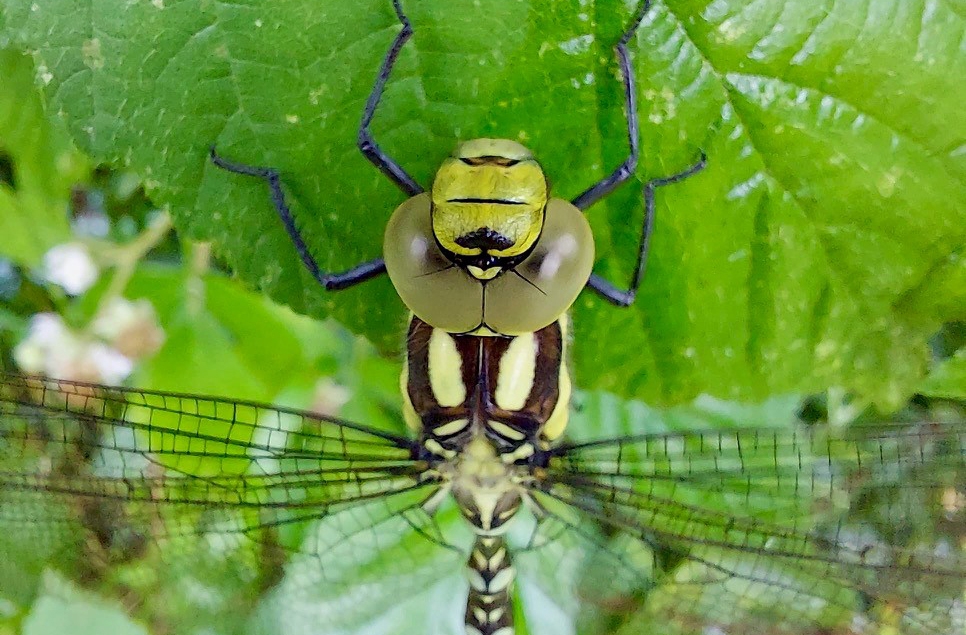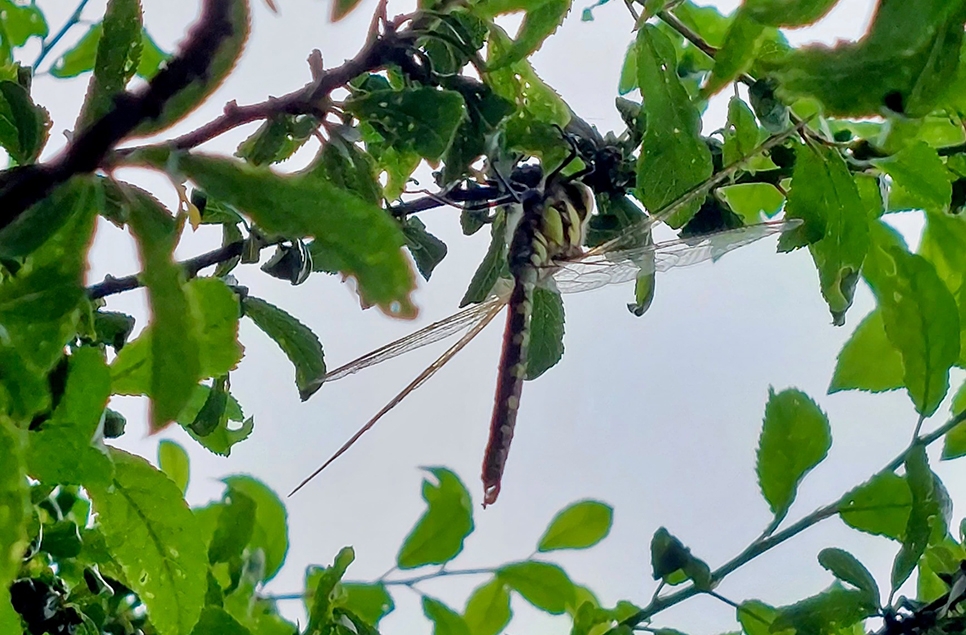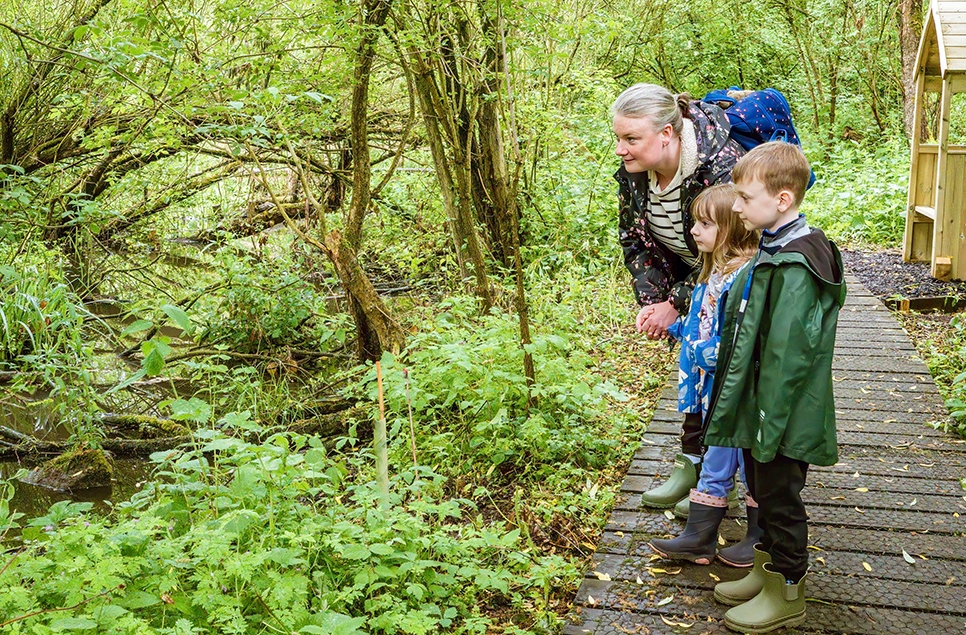A day in the life of a newly emerged dragonfly

Spotting dragonflies just after they've emerged and shed their exoskeleton is a pretty exciting wildlife encounter...
Reserve warden Kate shares her encounter with a teneral Southern hawker dragonfly at the verge of Spring Gill last July. She shares some fantastic facts and her wonderful images as we explore a day in the life of a newly emerged Southern hawker dragonfly!
A teneral dragonfly is one that is freshly emerged and usually has immature markings, colours and very shiny wings while it's cuticle hardens - usually over the first few days of its life. After this point it will resume the markings of a male or female.
This dragonfly is largely pale yellow in colour with brown eyes and white wing spots (called pterostigma). This is its immature (teneral) colouring as adults will have more yellow, green and blue body markings, as well as black wing spots.

You can tell it's a Southern hawker dragonfly because out of the 10 segments on its abdomen/tail, the bottom two segments have connected bands of colour (shown in the image above) where as other similar species will have separated dots on these segments. It also has broad 'headlights' on its thorax (shoulders). These 'headlights' are actually called antehumeral stripes. If you look at the abdomen/tail, you may also notice a pale green-blue beginning to come through as this dragonfly just starts to get hints of it's adult colours.
As Kate was photographing it, it started to vibrate its wings, which some species (including hawkers) do to generate heat in their flight muscles on overcast and cooler days, when they can't rely on the sun for warmth.
A large threat to new adults who often aren't yet flying strongly are the likes of predation from birds or damage due to rain. This dragonfly likely sensed Kate's presence and started warming up its flight muscles to find a perching point at a safer height than ground level. When it was ready it took a short flight higher up into the blackthorn bush.

Southern hawkers' flight period starts in July! They like to mature away from water, often using treelines where they will 'hawk' for insects. This one is in a perfect spot for doing just that, being found on the verge of Spring Gill.
When the weather's bad, dragonflies and damselflies don't just disappear, they play the world's best game of hide and seek- often hiding on the underside of leaves on trees or other vegetation, taking shelter until the weather improves.
Did you know... In the times of the dinosaurs, there was a group of dragonfly-like insects commonly known as protodonata - considered the ancestor of modern odonata- i.e. dragon and damselflies - that had a one-metre wingspan!
Dragonflies and damselflies are coming into their prime season. On a warm day you can pretty much guarantee sightings down at our amphibian ponds to the east of our site, well worth a visit!
Ready to visit?
If you've been inspired to explore Washington Wetland Centre to try and find dragonflies, find out more and plan your visit online.
Plan your visit



